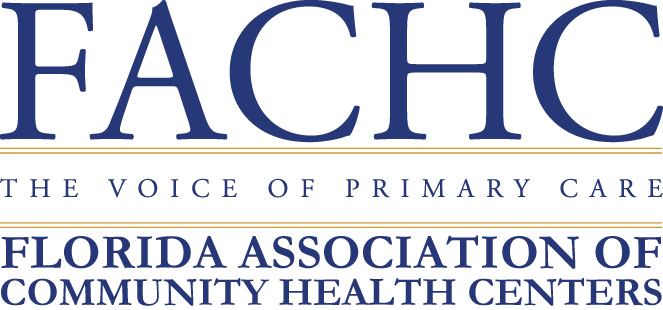Like it or not, social media has become an indispensable part of our lives. Fifteen years ago, many nonprofits were still hesitant to launch an organizational website on the Internet; today, we rarely come across a nonprofit that does not have a Facebook page or Twitter account. As more and more nonprofits are rushing into social media, their leaders often overlook one question: “What’s in it for me?” One of the obvious benefits of social media is that it has engendered new forms of communication and stakeholder engagement for nonprofit organizations. Now we propose something that is not so obvious but crucially important: it has engendered a new, novel, and highly valuable resource—social media capital.
Social media capital is a special form of social capital that is accumulated through an organization’s social media network. Nonprofits can look at it as being the key immediate outcome derived from their social media efforts, and it is a resource that can be converted or expended, like other resources, toward strategic organizational outcomes. To illustrate why and how social media capital is the linchpin of social media’s return on investment, we present a logic model for nonprofit organizations currently using, or planning to use, social media. Unless nonprofits understand the critical role of social media capital within this logic model—based on a plan that is well organized around strategic outcomes—then their social media efforts may essentially come to far less than might have been possible.
The model has five key steps (see Figure 1): inputs, outputs, immediate outcome, intermediate outcomes, and strategic outcomes. We organize the remainder of this article around these five elements. Note that, while the logic model presented here suggests a linear relationship, the actual process of accumulating, converting, and expending social media capital in an organization rarely follows a sequential order.
1. The Inputs: Resources and Audience Targeting Strategy
Though social media platforms do not charge for basic use of their services, effective social media use nonetheless requires nonprofits to dedicate inputs. In Figure 1, we have highlighted two elements of these inputs. The first element is straightforward: resources. It is not cost-free to get social media up and running for an organization: the successful adoption and use of social media require that nonprofit organizations devote the necessary time, money, and staff to the endeavor. Yet such resource commitments are also likely to be sorely underestimated by nonprofit managers, with social media tasks often passed off to a single staff member or intern as additional or secondary duties.
The other element is strategy, particularly regarding an organization’s communications role and its target audience. It is not enough to simply be on social media; instead, the organization needs to think strategically about what it wants to achieve through its presence. The starting point for this strategy should be the final element in Figure 1—namely, what are the strategic outcomes the organization is hoping to achieve. With those outcomes in mind, the organization needs to backward map and lay out a social media communications plan for reaching those outcomes. At the heart of this plan is determining which specific audience(s) the organization wishes to target and the communications role it will adopt to reach that audience.1
Here, the organization needs to do some research. An environmental organization working to reduce water consumption at home, for instance, might wish to target local lawmakers, coalition partners, opinion leaders such as journalists and educators, or current and future household owners (including teens and young adults). The point is that the organization should seek to cultivate a specific, well-defined audience through its social media communications.
The organization then needs to decide how it will engage with that audience.2 Key here is the role it will adopt to add value to its target audience’s social media feeds. Each of the above hypothetical audiences requires a different communications approach. Concretely, the organization might choose to become an expert or “thought leader” on a specific subject issue by crafting original content designed to inform, sway, or educate. Alternatively, it might seek to be a curator of information on that subject—becoming, in effect, a go-to source for the latest and most relevant information produced by others. Or, the organization might consider itself a convener or community builder, relying on social media activities designed to foster connections among stakeholders and thus build a more cohesive online community. Differently put, the organization needs to define its intended strategic role on social media. Does it wish to be an information source? An opinion leader? A market builder? A curator? A community builder? Each role potentially adds value to its audience’s social media feeds. What the nonprofit should seek to do is to match its own proclivities, interests, and resources with the audience’s needs.
In brief, before even beginning to bring hand to keyboard, the organization needs to develop a plan that clearly lays out its desired outcomes, clearly indicates the target audience, and clearly lays out a broad strategic identity for the organization’s communications efforts.
2. The Outputs: Social Media Connections and Messages
How social capital is acquired through social media is distinct and much narrower than how social capital is acquired in offline settings. On social media platforms, you will be reaching for an outcome with two main tools at your disposal: making connections and sending messages.3
Connections. The first output you have at your disposal is connecting. Connecting can be thought of as relationship building, because it solidifies a connection or ties to another user. Connecting tools include the organization’s friending and following of other users. With these formal social network connections, either you are connected or you are not, generally in a binary fashion. The purpose of these binary connections is that they demonstrate a nonprofit’s interest in engaging with other users; they are signals of interest in creating an online community. At the same time, these two-way relationships provide access to new information, whether you use it or not. If you do not, however, the tie may eventually atrophy.
Connecting actions are designed to make, build, foster, or maintain ties to a specific member (a particular individual or organization) within your ideal (strategically defined) network. Of course, this cannot be done unless you’ve already identified a target audience and adopted a strategic role for the organization’s communications efforts vis-à-vis that audience. For each role, a following must be built that eventually is expected to help further build itself through connecting and messaging actions.
Messages. The second output you can make use of on social media is messages. Through videos on YouTube, photos on Instagram, pins on Pinterest, messages on LinkedIn, tweets on Twitter, and status updates on Facebook, nonprofits can message and dynamically update their publics—and these messages comprise the bulk of communications activity on social media.4 In line with your social media strategic plan, these messages will chiefly target key, previously identified stakeholder groups and employ content that reflects the strategic thought leader, analyst, curator, connector, or community builder role you have set for yourself. Here, what is included in the messages matters: messages are designed to provide value-added content to your strategically identified ideal audience. The extent to which you can play an effective strategic role that you have adopted for your targeted community depends on whether your messages are meeting and exceeding what the community wants from you.
In addition to offering content to establish an organization’s strategic role, messages can also be used for targeting or connecting purposes, and may include replying and commenting, favoriting or liking, sharing, user mentions, hyperlinks, and hashtags. These actions form message ties that can be reciprocated, and over time the repeated use of message-based connecting also serves to develop ties with new users and strengthen ties with existing users.
For all audiences, finding the right mix of one-way information, two-way dialogue, and mobilizing messages will help the target audience be engaged and grow while also allowing the organization to leverage that audience to help the organization pursue its social mission.
3. The Immediate Outcome: Social Media Capital
The third step in the logic model, and the immediate outcome to be expected, is social media–based social capital, or what we are calling social media capital; these are the social resources in an organization’s social media network that can be accumulated, mobilized, and expended to achieve organizational outcomes.5
Social media capital is a special form of social capital. Social media capital stands apart from other forms of social capital in that its foundation lies in the public space comprising the formal online social media networks.6 Specifically, social media–based networks are seen as being more instrumental, more geographically dispersed, more loosely knit, more diverse, and less hierarchical and bureaucratic than other network forms, and they are created around specific interests more than institution, geography, or family.7 This allows for communities that, in the past, had no means of coming into existence, to be created around brands, specialized knowledge areas, rare diseases, and organizing issues where the community of interest is dispersed.
Again, on social media, the activities that are privileged are communication-based activities. Anything that can be communicated—information, rumors, messages, knowledge, ideas, memes, emotion, sentiment, affect, greetings, insults, compliments, and opinions—is fertile ground for making its way rapidly through these geographically dispersed, loosely connected networks.
Our key point here is that social media capital is always the central resource one seeks to accumulate because on social media the social network is key. To reach any meaningful organizational outcome through social media activities, the organization must, therefore, first acquire social media capital. In line with this point, a nonprofit must accumulate followers before any meaningful organizational engagement can take place, and this accumulation generally follows a typical set of steps: (1) a specific user is targeted, such as an important community member or a new user who is noticed to be following the organization; (2) the organization begins to develop a relationship with the user through some combination of reciprocal following, through sharing and liking the users’ messages, and through mentioning and acknowledging the user in targeted social media messages.8
Along the way, the organization begins to track—formally or informally—the digital footprints of the budding organization–stakeholder relationship that are visible through the users’ favoriting, sharing, comments, upvotes/downvotes, user mentions, and so forth.9 In this way, the community and its activities grow, and it is the network-based assets that make up the key immediate resource that organizations are developing when they engage in social media–based activities. This is why nonprofits cannot simply employ social media to get donations, find volunteers, or mobilize constituents for advocacy action. Instead, they must first build their stock of social media capital through growing and nurturing their networks of social media followers.
While it is beyond the scope of this article to discuss how to measure social media capital, it is useful to note that social media capital is discernible along a number of structural and cognitive dimensions. Among these are the size of the organization’s audience network, the organization’s position within the audience network, and the length and/or number of interactions the organization has with each audience member, as well as network norms and values such as commitment, identity, solidarity, expectations and obligations, and trust. Given the publicly visible nature of social media, each dimension is observable and each reflects elements of the social resources the organization has accumulated on social media.
Social media capital plays an inescapable and key role in organizational efforts on social media, yet it is a means to an end. There are two common processes through which the acquisition of social media capital converts to strategic organizational objectives. In the first process, social media capital has an indirect impact on outcomes in that it can be converted first into other forms of capital that, in turn, directly influence organizational outcomes. These are called intermediate outcomes. In the second process, social media capital is expended to directly generate strategic outcomes.
4. Intermediate Outcomes: Converting Social Media Capital into Alternative Organizational Resources
As shown in Figure 1, once a nonprofit has built its social media capital (immediate outcome), it is often able to convert this into other types of resources, such as cultural, financial, human, intellectual, or reputational capital (intermediate outcomes).
This conversion concept is explicitly reflected in a slogan belonging to the firm Constant Contact, which seeks to help companies “turn fans into customers,” thus converting social media capital into financial capital. Similarly, when a nonprofit organization asks its followers to take action on a cause that later becomes successful, it has leveraged its social resources into human, reputational, cognitive, and very likely financial capital. The precise manner in which this conversion takes place varies greatly according to the context. The critical point to recognize is the need to identify and account for a conversion plan in the strategic social media plan.
5. Strategic Outcomes
As shown in the logic model in Figure 1, the ultimate goal is to leverage social media capital to reach strategic outcomes.
Figure 1 depicts two ways of reaching such organizational outcomes. The first path in the model derives from the use of already converted intermediate outcomes (converting social media capital into other resources and then expending those resources—or capital conversion). The process is relatively straightforward: after accumulating social media capital, the organization can convert it into cultural, financial, human, intellectual, or symbolic capital and then deploy that toward a predetermined organizational outcome. For example, when Justin Trudeau’s 2015 campaign for prime minister of Canada asked its followers on social media to make a donation, it was essentially converting its huge stock of social media capital into financial capital, which could then be spent on the organization’s strategic outcome: electing Justin Trudeau.
The second path involves the direct translation of social media capital into a desired organizational outcome (direct expenditure of social media capital). Continuing with the example of Justin Trudeau, when the campaign asked its followers on social media to go vote for the candidate, it was translating social media capital directly into the organization’s strategic outcome of electing Justin Trudeau. This more direct building of social media toward an outcome is not necessarily a one-step process. For instance, nonprofit advocacy organizations employ Twitter in public education, but often as a part of a larger strategy. The public education approach to advocacy is not to directly change public policy but rather to help change people’s minds, opinions, and attitudes—which, over the long term, is expected to change attitudes toward public policy and then, ultimately, public policies themselves. But, the extent to which an advocacy organization can achieve that public education and policy outcome through its social media efforts ultimately depends on the amount of social media capital built within its social media network.
…
Social media capital is generated differently and, in some ways, more simply than capital accumulated offline or even in previous forms of new media such as websites or blogs. Social media capital is built mainly by messages and connections, and if you have a trusted role in social networks where you may wish to incite action of some kind, that capital can be translated into other resources or used directly to produce key organizational outcomes. Still, practitioners need to recognize that, as with anything, there are steps to accumulating and deploying (and even repaying) capital. Because the accumulation of social media capital requires a reciprocal relationship with their publics, it is critical for nonprofits to more clearly understand how the accumulation and mobilization of social media–based resources occur over time and how essentially interactive the entire endeavor is. It is only by being clear about and comfortable with the reciprocal, public, and fluid nature of these resources that organizational leaders can achieve meaningful organizational outcomes and maximize the economic and social returns on their social media investment.
Notes
- Gregory D. Saxton and Chao Guo, “Online stakeholder targeting and the acquisition of social media capital,” International Journal of Nonprofit and Voluntary Sector Marketing 19, no. 4 (October 2014): 286–300.
- Chao Guo and Gregory D. Saxton, “Tweeting Social Change: How Social Media Are Changing Nonprofit Advocacy,” Nonprofit and Voluntary Sector Quarterly 43, no. 1 (February 2014): 57–79.
- Gregory D. Saxton and Chao Guo, “Conceptualizing Social Media Capital: Measures, Causes, and Outcomes” (presentation at the Annual Meeting of the Association for Research on Nonprofit Organizations and Voluntary Action, Denver, CO, November 20–22, 2014).
- Kristen Lovejoy and Gregory D. Saxton, “Information, Community, and Action: How Nonprofit Organizations Use Social Media,” Journal of Computer-Mediated Communication 17, no. 3 (April 2012): 337–53.
- Saxton and Guo, “Online stakeholder targeting and the acquisition of social media capital”; and Saxton and Guo, “Conceptualizing Social Media Capital.”
- Gerald C. Kane et al., “What’s Different about Social Media Networks? A Framework and Research Agenda,” MIS Quarterly 38, no. 1 (March 2014): 274–304.
- danah m. boyd and Nicole B. Ellison, “Social Network Sites: Definition, History, and Scholarship,” Journal of Computer-Mediated Communication 13, no. 1 (October 2007): 210–30; and Lee Rainie and Barry Wellman, Networked: The New Social Operating System (Cambridge, MA: MIT Press, 2012).
- Guo and Saxton, “Tweeting Social Change.”
- Brian G. Smith, “Public relations identity and the stakeholder–organization relationship: A revised theoretical position for public relations scholarship,” Public Relations Review 38, no. 5 (December 2012): 838–45.
In A Nutshell
Social media capital has its own special characteristics, so nonprofits should be intentional about its deployment. Understanding the leadership roles available, and considering how to develop your position within that world and toward what outcomes, is important.
Nonprofits should think of social media capital as they would financial or any other type of capital, in terms of planning. Just like financial capital is a convertible resource and requires both short- and long-term planning, social media capital is fluid and requires a careful strategy to maximize its support of both intermediate and long-term goals.
Social media capital is more often built around interests or causes than around institutions, and this is where nonprofits have an advantage over other organizations. Nonprofits can integrate their missions into their social media presence and strategy to take advantage of the capital that comes with advocacy or awareness efforts and social justice causes. Similarly, any news events that relate to a nonprofit’s mission will likely be reflected in popular media, and nonprofits can take advantage of this opportunity for exposure to build their online presence.
The reciprocal nature of social media engagement can be a source of strength for nonprofits if it is recognized and used efficiently. In fact, social capital well spent will build more social capital. What are stakeholders talking about? What are they asking for? The reciprocal use of social media as a tool of communication gives nonprofits a direct line to their stakeholders’ concerns.










